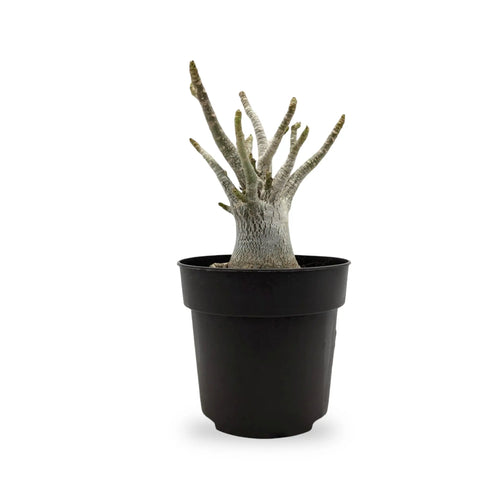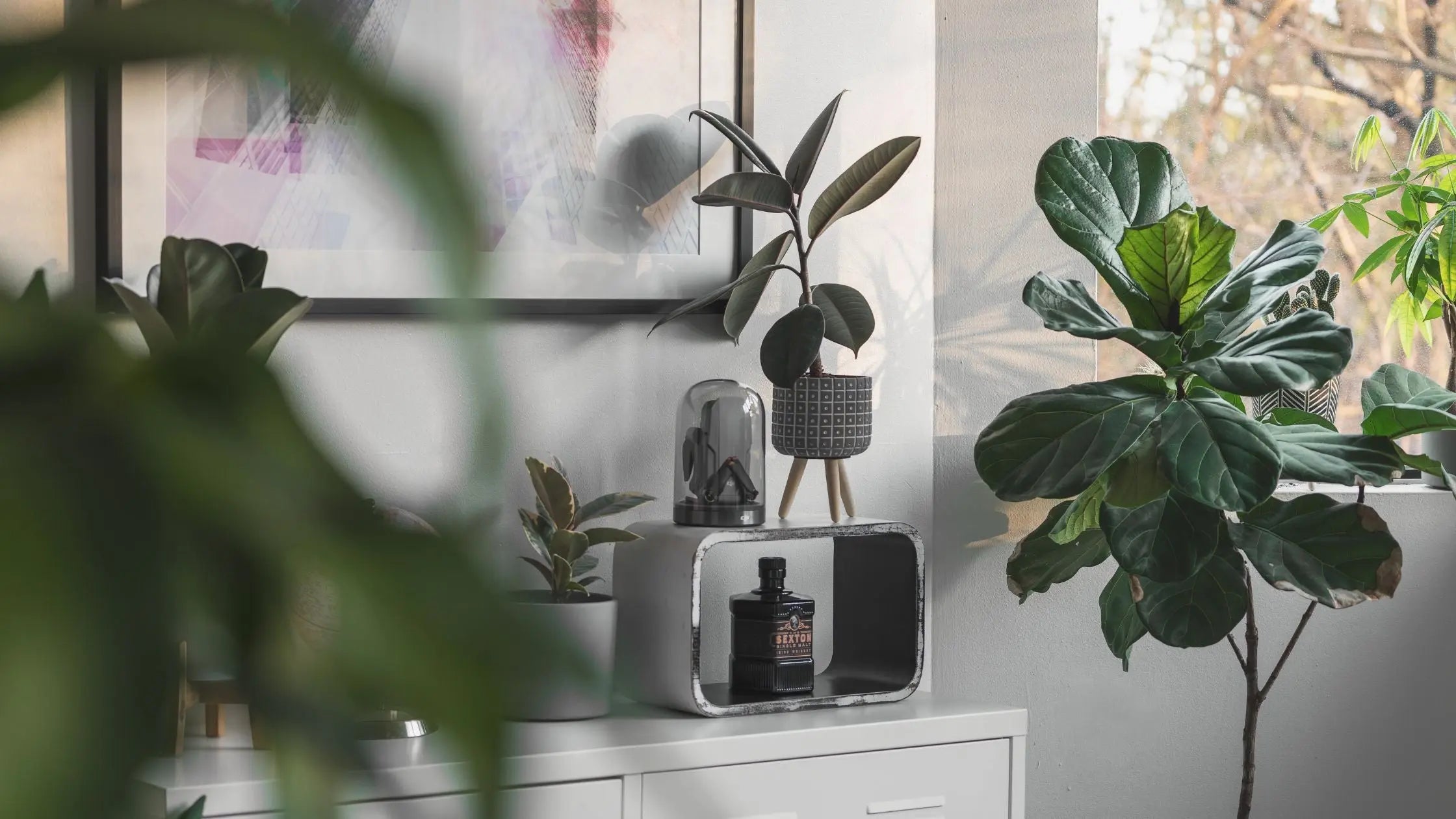Houseplants provide your house with fresh air, colour, and life. They enhance mood, clean the air, and provide any area with some natural elements. Using hanging pots and indoor planters lets you maximise space and produce amazing displays from houseplants. This ultimate planters and pots guide will assist you in selecting the correct plants, choosing the best pots and planters, and giving your plants the required maintenance to flourish.
Whether your experience with gardening is low or high, you will discover helpful advice on designing your house with hanging plant pots indoors and more. Get right in and begin your trip through indoor gardening right now!
Selecting Appropriate Plants
Establishing a vibrant indoor garden depends on choosing appropriate houseplants. Choose species that will flourish in the conditions you can offer, as not all plants fit indoor settings. These are some strong and well-liked options to give thought to:
- Beginning users will find spider plants ideal because of their simplicity and versatility. Their long, arching leaves generate tiny spiderettes that can be grown from one plant into others. They can withstand occasional neglect and do best in indirect light.
- Pothos plants can flourish in low light levels. Their trailing tendrils make hanging plant pots indoors perfect. By eliminating contaminants like formaldehyde and benzene, pothos also help to clean the air.
- Snake plants are extremely low-maintenance. They fit almost any interior environment since they only need light and water. Their straight, sword-like leaves provide your décor with an arresting architectural accent.
- Ferns—such as Boston fern—thrive in damp conditions. They want moist soil and indirect light. Their fluffy fronds give any room a rich, green accent.
- Succulents require very little water. Their thick leaves help plants store water, so they are drought-tolerant. Different shapes and colours of succulents give your indoor garden visual appeal.
Choosing Pots and Planters
Planters and pots range in form, scale, and materials. Here's something to give thought:
- Select a pot whose root system fits that of the plant. If it is too small, the plant will be root-bound. Too big; it could hold too much water.
- Though they breathe easily, clay pots dry out rapidly. Plastic pots hold moisture longer. Though heavy, ceramic pots are elegant.
- Check pots for drainage holes to prevent waterlogging. Put a smaller pot with drainage inside if you're using a beautiful pot without holes.
- Hanging plant pots indoors is perfect for trailing plants like pothos and spider plants. They create visual interest at several levels and conserve space.
Varieties of Pots and Planters
Ceramic pots
Many times, glazed ceramic pots are non-porous. Therefore, they are less prone to dry out fast and retain water well. Indoor plants can be fashionable since they come in different hues and patterns. Larger plants are best suited for ceramic pots because they can be heavy, particularly when loaded with soil and a mature plant.
Metal Planters
Metal planters are robust and often used in modern or industrial-themed homes. Plants in metal planters might require more regular watering as they do not hold moisture like clay or plastic pots do. Metal can heat up rapidly, so not all plants are suited for it.
Hanging Pot
Hanging plant pots indoors are a great choice for trailing plants or those with lengthy tendrils. They provide your indoor garden with vertical dimensions and free floor and shelf space. You can create hanging pots from plastic, metal, and spun fibres, among other materials. Make sure they are firmly attached to avoid mishaps; also, consider the weight of the pot while it is loaded with soil and a developing plant.
Functional and Ornamental Aspects
When choosing pots and planters, consider utility as well as appearance. Consider how the pot will accentuate the décor in your house and meet the particular needs of your plants. Combining many kinds of pots will produce a visually striking indoor garden.
Aesthetic appeal: Select pots consistent with your interior design. While rustic, textured pots might be preferable for traditional or boho decor.
Weight and Mobility: Consider the pot's weight, particularly if you intend to move it often. While heavy pots are more solid and less prone to topple over, lightweight pots are easier to move.
Knowing the several kinds of pots and planters and their particular advantages will help you to choose wisely that would improve the condition and appearance of your houseplants.
Arranging Your Houseplants
Plant your houseplants in the UK in pots and planters following these guidelines:
- For drainage, top the bottom with gravel or tiny stones.
- Choose a top-notch potting mix for your plant. Garden soil should be avoided, as it could compact and impede drainage.
- Take the plant gently from its present pot. Put it in the new container so that the roots extend out. Complete with potting mix all around the plant.
- Water the plant till the bottom drains. This brings the ground around the roots to settle.
- Put the pot in a place that fits the plant's light requirements.
Caring For Your Houseplants
Good care guarantees your houseplants' survival. Following these important guidelines will help:
- Generally, most houseplants in the UK want the soil to dry out somewhat between watering. One often made mistake is overwatering. Feel the soil wetness with your finger. When something seems dry, water.
- Plants have varying light requirements. Succulents require strong, indirect light, while ferns and snake plants can survive low light. Turn your plants occasionally to guarantee uniform development.
- During the growing season, spring and summer, feed your plants a balanced, water-soluble fertiliser. Cut back on autumn and winter feasting.
Pruning and Repotting
Pruning stimulates fresh growth and helps your plants remain healthy. Eliminate dead or yellowing leaves often. Cut down lanky growth to promote a more complete form.
Plants outgrowing their pots need repotting. Among the signs are roots emerging from drainage holes or the plant tilting. Repot using fresh potting mix in a somewhat larger container.
The End Note
Growing houseplants in hanging pots and indoor planters is an interesting and fulfilling pastime. The right plants, containers, and maintenance will help you design a vibrant indoor garden that improves the comfort and appeal of your house. Remember to select plants that fit your house's light and humidity and give them appropriate treatment to maintain their vitality and health.
Are you looking for plant pots and houseplants in the UK? If yes, contact Leaf Culture. You can browse our website to purchase various houseplants and plant pots anytime.









